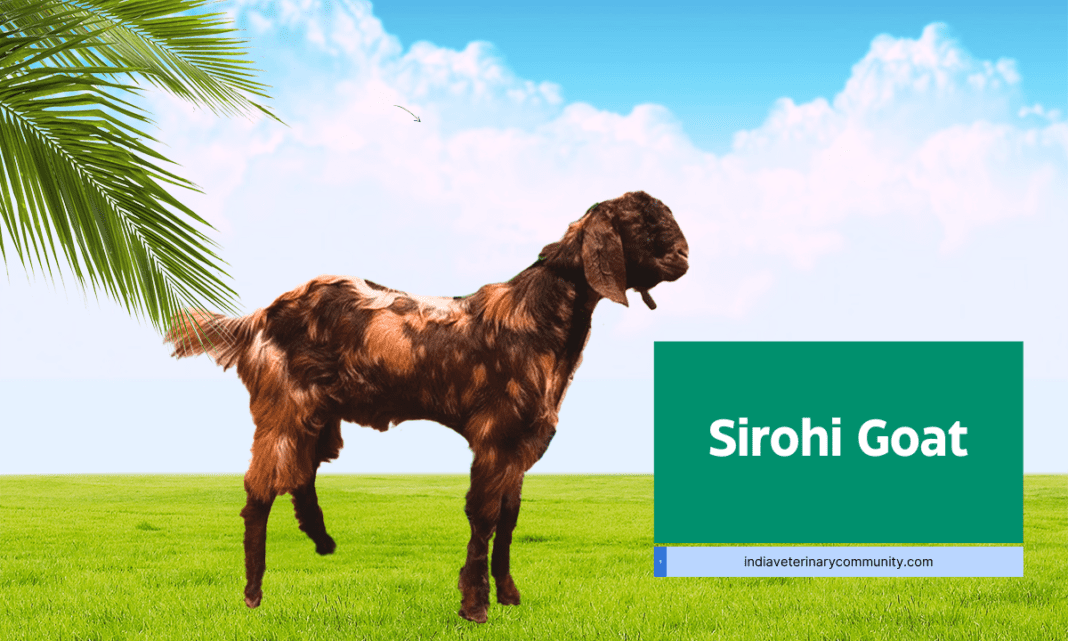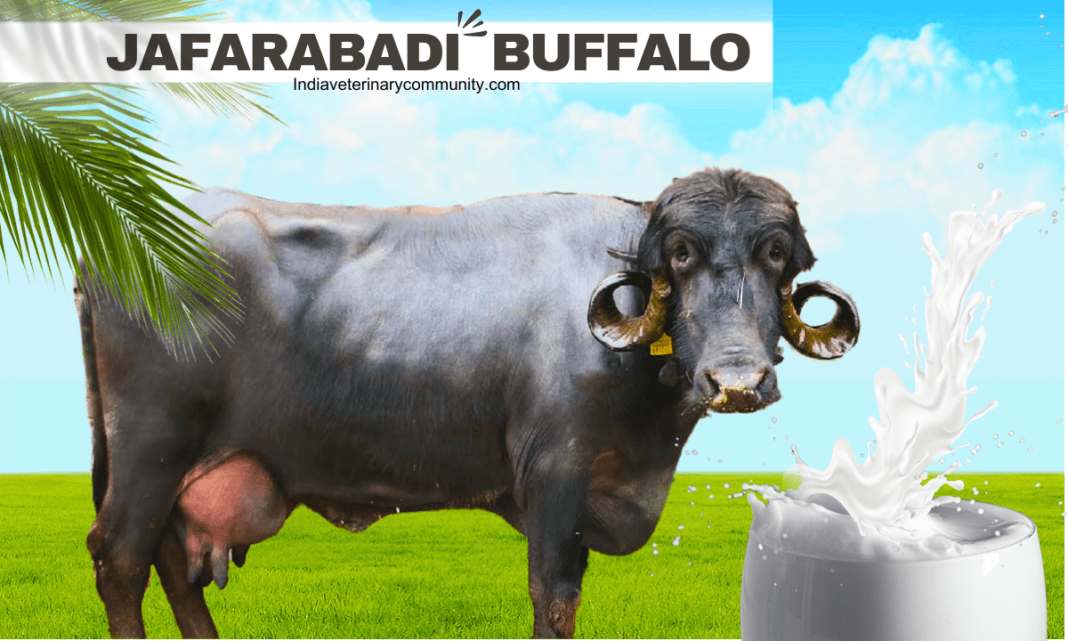Sirohi goat farming is gaining immense popularity across India due to the goat’s adaptability, resilience, and the commercial value they bring. For farmers, particularly those in rural areas, Sirohi goats are not only a source of income but also an integral part of sustainable agriculture.
This article aims to provide a simple and detailed guide on how to start and manage Sirohi goat farming, ensuring both profitability and sustainability.
Whether you are a seasoned farmer or a beginner looking to explore sustainable farming practices, Sirohi goats offer an exciting opportunity to build a thriving farm. Let’s look into understanding how these goats can revolutionize your farming venture while contributing to ecological balance.
History and Importance of Sirohi Goats in India
The Sirohi goat breed hails from the Sirohi district of Rajasthan, India. These goats have been reared for generations by local communities for their meat, milk, and sometimes even their skin.
In regions where vegetation is sparse, Sirohi goats have proven their ability to survive and thrive, making them an invaluable asset to farmers who rely on them for both food and income.
The significance of Sirohi goats extends beyond their economic benefits. In areas where farming conditions are harsh, these goats help sustain the local ecosystem by grazing on weeds and shrubs, preventing overgrowth and maintaining ecological balance.
Their adaptability to diverse environments, coupled with their hardiness, has made them a popular choice among farmers, especially those working in arid and semi-arid regions.
Black Bengal Goat Farming: A Simple Guide for Indian Farmers
Jamunapari Goat Guid For Indian Farmers In 2024
Key Characteristics of Sirohi Goats
One of the reasons why Sirohi goats are ideal for farming is their robust physical characteristics. These medium to large goats are strong and tough. They can live easily in difficult places.
- Size: Male Sirohi goats can weigh between 60 to 80 kg, while females generally weigh around 40 to 55 kg.
- Appearance: They have short hair, which can be brown, black, or white. They also possess distinctive curved horns that make them easily recognizable.
- Adaptability: Sirohi goats can withstand harsh climates and thrive on minimal food. They are particularly suited for areas where feed is scarce.
- Drought Resistance: Unlike many other breeds, Sirohi goats can survive with limited water and food resources, making them a valuable asset in regions affected by drought.
The Sirohi breed has gained recognition across India due to these characteristics, and their demand continues to grow as more farmers understand the benefits they offer in terms of both meat and milk production.
Sustainable Farming Practices in Sirohi Goat Farming
Sustainability is very important to long-term success in Sirohi goat farming. By adopting environmentally friendly practices, farmers can ensure that their farms not only yield better results but also contribute positively to the environment. Here are some sustainable practices that are widely recommended for Sirohi goat farming:
- Rotational Grazing: This practice involves moving goats between different pasture areas. It helps prevent overgrazing, allows the land to recover, and promotes biodiversity. Rotational grazing also ensures that goats have access to fresh and nutritious pasture.
- Organic Waste Management: Using goat manure as natural fertilizer for crops is a sustainable practice that enhances soil fertility. It also helps to use fewer chemical fertilizers, which can be bad for the environment.
- Water Conservation: You can collect and store rainwater to use when there is less rain. This makes sure the goats always have clean water, which is very important for their health and work.
By integrating these practices into your farming operations, you can ensure a sustainable and eco-friendly farming model that benefits both the goats and the environment.
Maximizing Meat Production in Sirohi Goats
The commercial potential of Sirohi goat farming lies largely in meat production. The demand for goat meat (chevon) in India and globally is increasing, making it a lucrative venture for farmers. To maximize meat production, certain strategies need to be followed:
- Proper Nutrition: A balanced diet that is rich in protein, vitamins, and minerals is crucial for the optimal growth of Sirohi goats. Green fodder, legumes, and concentrates should be incorporated into their diet to ensure weight gain and muscle development.
- Health Management: Regular health checks and vaccinations are vital for preventing diseases that could reduce meat yield. Goats that are healthy and well-cared for will grow faster and produce better-quality meat.
- Grazing Management: By implementing rotational grazing, you can ensure that the goats graze on nutritious, parasite-free pastures. This not only improves their health but also enhances meat quality.
The combination of a proper diet, health management, and effective grazing techniques will significantly improve your farm’s productivity, resulting in higher meat yields and greater profitability.
Breeding and Reproduction of Sirohi Goats
Breeding plays a critical role in ensuring the success of your Sirohi goat farm. Sirohi goats are known for their high reproduction rates, making them an ideal choice for farmers who want to quickly scale their operations.
- Selecting Breeding Stock: When choosing breeding pairs, it is essential to select goats that have desirable traits such as size, health, and temperament. Healthy breeding pairs will produce strong offspring that are more likely to thrive.
- Genetic Diversity: Maintaining genetic diversity within your herd is essential to prevent inbreeding, which can lead to health issues and reduced productivity.
- Gestation and Kid Care: Sirohi goats have a gestation period of about 150 days. During this time, it is crucial to provide pregnant does with proper nutrition and care to ensure the health of the kids. Once the kids are born, providing them with adequate nutrition and a clean environment is important for their survival and growth.
A well-managed breeding program will lead to a strong, healthy herd that is capable of reproducing consistently and contributing to the overall profitability of your farm.
Setting Up a Sirohi Goat Farm: Step-by-Step Guide
If you are interested in starting a Sirohi goat farming look this:
- Choose the Right Location: Look for land that has access to water and sufficient pasture for grazing. The land should be fenced to protect the goats from predators.
- Build Shelters: Goats need protection from extreme weather. Simple shelters made from locally available materials like bamboo, wood, or thatch can provide shade during the summer and warmth during the winter.
- Buy Healthy Goats: When purchasing Sirohi goats, make sure to buy them from reputable breeders who provide documentation on their health and lineage.
- Focus on Nutrition: A proper feeding regime that includes green fodder, legumes, and concentrates will ensure the goats grow healthy and strong.
- Health Management: Schedule regular veterinary check-ups, vaccinations, and deworming to keep the herd disease-free.
- Plan for Reproduction: Set up a breeding program to ensure you can grow your herd and maintain productivity.
- Market Your Products: Establish connections with local markets, restaurants, and butchers to sell goat meat. You can also explore selling online to reach a wider audience.
Commercial Benefits of Sirohi Goat Farming
Sirohi goat farming offers a range of commercial benefits that make it an attractive venture for farmers:
- High Demand for Goat Meat: The growing demand for goat meat in both domestic and international markets provides an excellent opportunity for profit.
- Low Maintenance: Sirohi goats require minimal care compared to other livestock, reducing overall maintenance costs.
- Adaptability to Diverse Environments: The goats’ ability to survive in diverse climates means they can be farmed in a variety of locations.
- Sustainable Farming Model: By incorporating sustainable practices, farmers can reduce operational costs and improve productivity.
Common Challenges and Solutions in Sirohi Goat Farming
Like any farming venture, Sirohi goat farming comes with its own set of challenges. However, these can be easily overcome with proper planning and management:
- Disease Management: Regular health checks, vaccinations, and sanitation will help prevent common diseases in goats.
- Market Fluctuations: Build relationships with local buyers to secure consistent demand and reduce the impact of market fluctuations.
- Feed Availability: During dry seasons, ensuring a supply of stored fodder and concentrates can prevent feed shortages.
Final Thoughts
Sirohi goat farming is an excellent choice for those interested in sustainable, profitable agriculture. The breed’s adaptability, high reproduction rates, and low maintenance needs make it ideal for farmers in India and beyond.
By following sustainable practices, ensuring proper nutrition, and focusing on breeding, you can build a thriving goat farm that provides significant economic benefits.
For aspiring entrepreneurs and farmers, Sirohi goat farming presents a golden opportunity to contribute to both economic growth and environmental sustainability.




